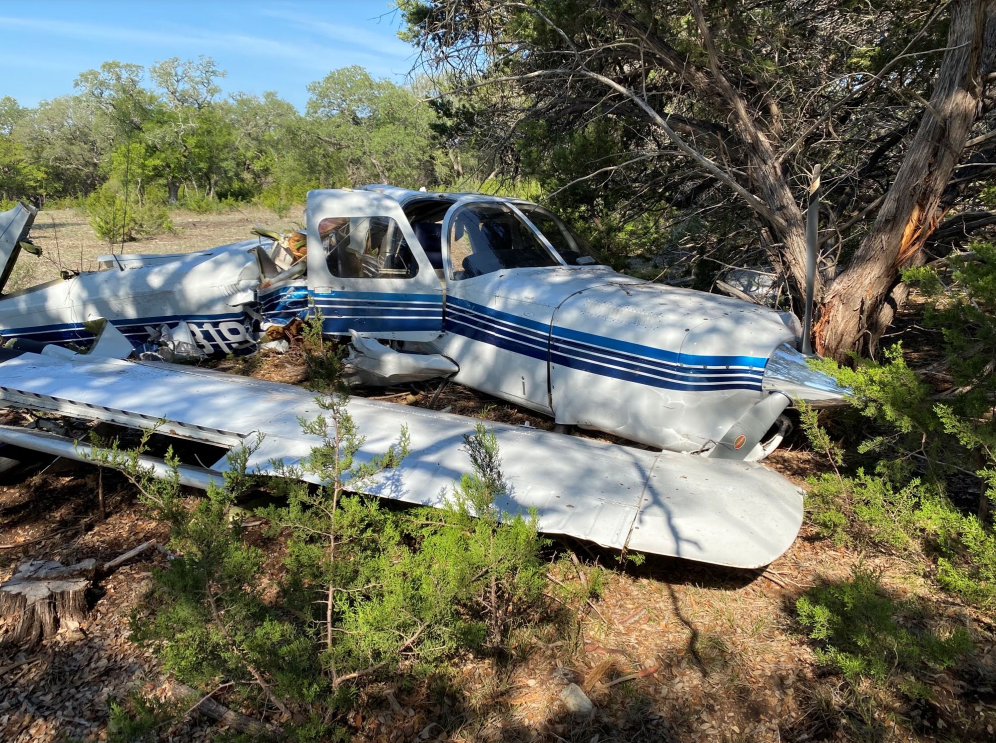
ASN Wikibase Occurrence # 283973
This information is added by users of ASN. Neither ASN nor the Flight Safety Foundation are responsible for the completeness or correctness of this information.
If you feel this information is incomplete or incorrect, you can submit corrected information.
| Date: | Friday 9 September 2022 |
| Time: | 07:50 |
| Type: |  Piper PA-32RT-300T Turbo Lance II |
| Owner/operator: | Elusive Aviation Inc |
| Registration: | N31981 |
| MSN: | 32R-7887018 |
| Year of manufacture: | 1978 |
| Total airframe hrs: | 3655 hours |
| Engine model: | Lycoming TIO-540-51AD |
| Fatalities: | Fatalities: 0 / Occupants: 2 |
| Aircraft damage: | Substantial |
| Category: | Accident |
| Location: | near Bulverde Airpark (1T8), San Antonio, TX -
 United States of America United States of America
|
| Phase: | Initial climb |
| Nature: | Private |
| Departure airport: | Bulverde Airpark, TX (1T8) |
| Dallas-Love Field, TX (DAL/KDAL) | |
| Investigating agency: | NTSB |
| Confidence Rating: |
On September 9, 2022, about 0750 central daylight time, a Piper PA32RT-300T airplane, N31981, was substantially damaged when it was involved in an accident near Bulverde, Texas.The pilot and passenger were not injured. The airplane was operated under the provisions of Title 14 Code of Federal Regulations Part 91 as a personal flight
The pilot reported the airplane did not accelerate as usual during the takeoff roll. To avoid obstacles at the end of the runway, the pilot continued the takeoff. The airplane cleared powerlines, trees, and a school, but was nearing a stall so the pilot decided to make a forced landing in a field. During the landing the airplane collided with a tree, resulting in substantial damage to the right wing and fuselage.
Examination of the engine found excessive carbon deposits around the No. 4 cylinder exhaust valve. A large amount of carbon buildup was found on the rocker arm, rocker shaft, and valve spring. The rotator cap also had carbon deposits and exhibited a groove wear pattern consistent with a lack of cap rotation. The exhaust valve guide had excessive wobble and movement within the guide. The No. 5 exhaust valve also displayed signatures of carbon buildup but not to the same extent as the No. 4.
No other anomalies were detected with the engine or airframe.
The loss of engine power was likely due to at least one stuck exhaust valve.
Probable Cause: The partial loss of engine power due to excessive carbon deposits that resulted in one or more stuck exhaust valves.
Accident investigation:
 |
|
Sources:
NTSB CEN22LA413
https://flightaware.com/live/flight/N31981
https://data.ntsb.gov/Docket?ProjectID=105901
https://registry.faa.gov/AircraftInquiry/Search/NNumberResult?nNumberTxt=N31981
Location
Images:

Photo: NTSB
Revision history:
| Date/time | Contributor | Updates |
|---|---|---|
| 28-Sep-2022 21:52 | Captain Adam | Added |
| 01-Feb-2024 12:56 | ASN Update Bot | Updated [Time, Other fatalities, Departure airport, Destination airport, Source, Damage, Narrative, Accident report] |
| 07-Feb-2024 10:43 | Captain Adam | Updated [Time, Departure airport, Source, Narrative, Photo] |
Corrections or additions? ... Edit this accident description
The Aviation Safety Network is an exclusive service provided by:


 ©2024 Flight Safety Foundation
©2024 Flight Safety Foundation